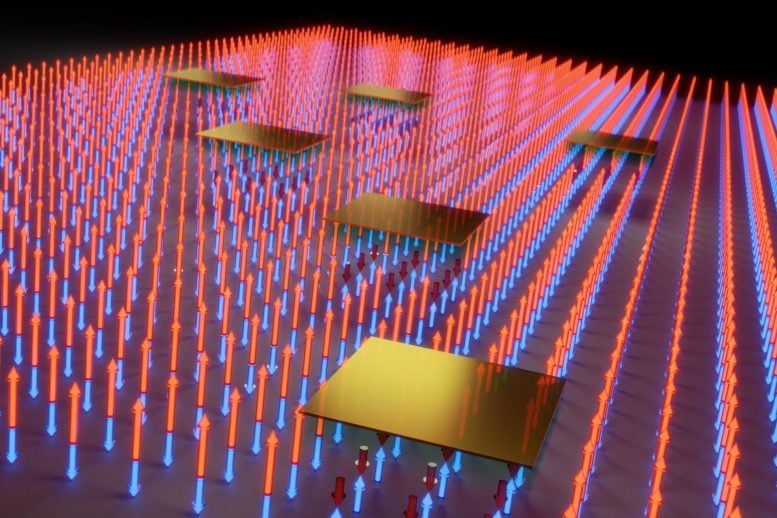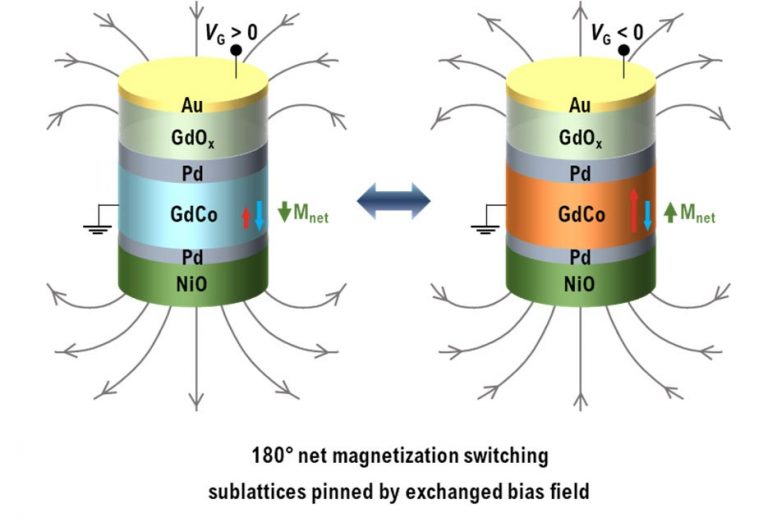
Arrows indicate the magnetizations of the arrays of gadolinium (red) and cobalt (blue) atoms in a lattice. Applying a voltage to electrodes at the top (yellow patches) loads hydrogen into the magnetic material, which changes the relative magnitude of the magnetizations under it, flipping the direction of the overall magnetic field in that area. Credit: Courtesy of the researchers
Reversible system can flip the magnetic orientation of particles with a small voltage; could lead to faster data storage and smaller sensors.
Most of the magnets we encounter daily are made of “ferromagnetic” materials. The north-south magnetic axes of most atoms in these materials are lined up in the same direction, so their collective force is strong enough to produce significant attraction. These materials form the basis for most of the data storage devices in today’s high-tech world.
Less common are magnets based on ferrimagnetic materials, with an “i.” In these, some of the atoms are aligned in one direction, but others are aligned in precisely the opposite way. As a result, the overall magnetic field they produce depends on the balance between the two types — if there are more atoms pointed one way than the other, that difference produces a net magnetic field in that direction.
In principle, because of their magnetic properties are strongly influenced by external forces, ferrimagnetic materials should be able to produce data storage or logic circuits that are much faster and can pack more data into a given space than today’s conventional ferromagnets. But until now there has been no simple, fast, and reliable way of switching the orientation of these magnets, in order to flip from a 0 to a 1 in a data storage device.
Researchers at 
This diagram illustrates the structure of devices designed to produce a 180-degree switching of the net magnetization by applying a voltage. Credit: Courtesy of the researchers
The findings appear in the journal Nature Nanotechnology, in a paper by postdoc Mantao Huang, MIT professor of materials science and technology Geoffrey Beach, and professor of nuclear science and technology Bilge Yildiz, along with 15 others at MIT and in Minnesota, Germany, Spain, and Korea.
The new system uses a film of material called gadolinium cobalt, part of a class of materials known as rare earth transition metal ferrimagnets. In it, the two elements form interlocking lattices of atoms, and the gadolinium atoms preferentially have their magnetic axes aligned in one direction, while the cobalt atoms point the opposite way. The balance between the two in the composition of the